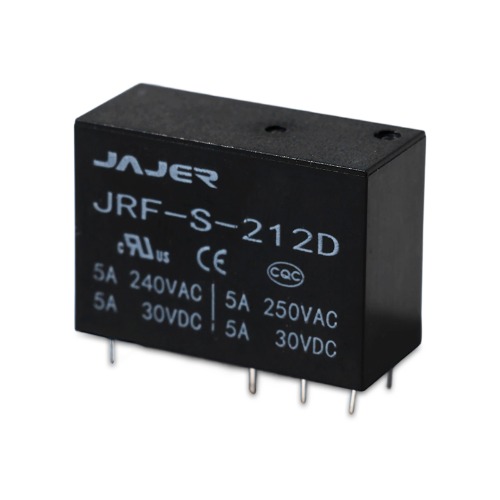The General Purpose Relay serves as the flexible “workhorse” of control systems. It is often used for relay sequencing, signal level switching, and interfacing low-voltage logic circuits with power devices. Because of its moderate capacity and broad compatibility, it is especially useful in automation where many control channels, interlocks, and signal paths need to be managed.
Meanwhile, the Industrial Control Relay, with its built-for-duty design, intervenes when higher current switching, durability, and environmental resilience are required. The two relay types complement each other—general purpose relays manage logic and control, industrial control relays handle the heavy lifting.

Why They Are “Essential”
The indispensability of general purpose relays in industrial automation stems from several practical reasons:
Scalability of control channels
Large automated systems may require dozens or hundreds of control channels. Using heavy-duty relays for every channel would be cost-prohibitive. General purpose relays provide a balanced solution that scales well.
Speed of design iteration
During prototyping or adjustments, you often need to rewire logic or interlocks. With general purpose relays, you can quickly modify wiring or logic without re-specifying bulky relays.
Separation of concerns
By letting general purpose relays handle control logic and industrial control relays handle power switching, you keep the control side insulated from electrical noise, surges, and mechanical stress.
Maintenance and serviceability
Because they are easier to remove, inspect, and replace, general purpose relays reduce maintenance time and downtime in complex systems.
Therefore, in robust industrial automation systems, the general purpose relay is far from optional — it is often the structural glue holding control logic together.
Design Strategies: Using General Purpose Relays Wisely
To maximize the benefits, you must design carefully. Below are key strategies:
Layered Relay Architecture
A proven approach is layering:
Control / Signal Layer: Use General Purpose Relays
Power / Load Layer: Use Industrial Control Relays
This separation ensures that control logic remains protected from harsh loads and switching transients.
Derating & Safety Margins
Even though general purpose relays are not intended for heavy loads, always include safety margin:
Select relays rated above expected current and voltage (e.g. 25–30% margin for inductive loads)
Use suppression circuits (RC snubber, MOV, diode, etc.) to suppress voltage spikes that degrade contacts
Use of Interlock & Safety Circuits
General purpose relays are ideal for implementing interlock logic, safety circuits, and fail-safe paths. For example:
Emergency stop relays
Motor interlock (so that two motors cannot run simultaneously)
Sequencing of steps with delays
Diagnostics & Monitoring
Many modern general purpose relays come with features like built-in indicator LEDs, transparent housings, or test buttons, making diagnostics easier.
You can design systems so that relay failures trigger alarms or fallback modes before major faults occur.
Redundancy and Fault Tolerance
In critical automation systems, duplicate general purpose relays or cross-monitoring circuits can provide redundancy. If one control relay fails, another can take over logic control while the power switches remain handled by industrial control relays.
General Purpose Relays are an essential part of the control architecture for industrial automation, not just an add-on component. They carry the burden of signal logic, interlocks, diagnostics, and scalable controls, enabling Industrial Control Relays to focus on switching heavy power loads reliably.
By carefully designing layered relay architectures, choosing proper ratings, implementing suppression and diagnostics, and anticipating maintenance needs, you can build automation systems that are resilient, maintainable, and efficient.
Quick Contact
Yueshang Innovation Park, Wengyang Street, Yueqing City, Zhejiang, China
Pages
Stay In Touch
If you have any questions or need help, feel free to contact with our team.